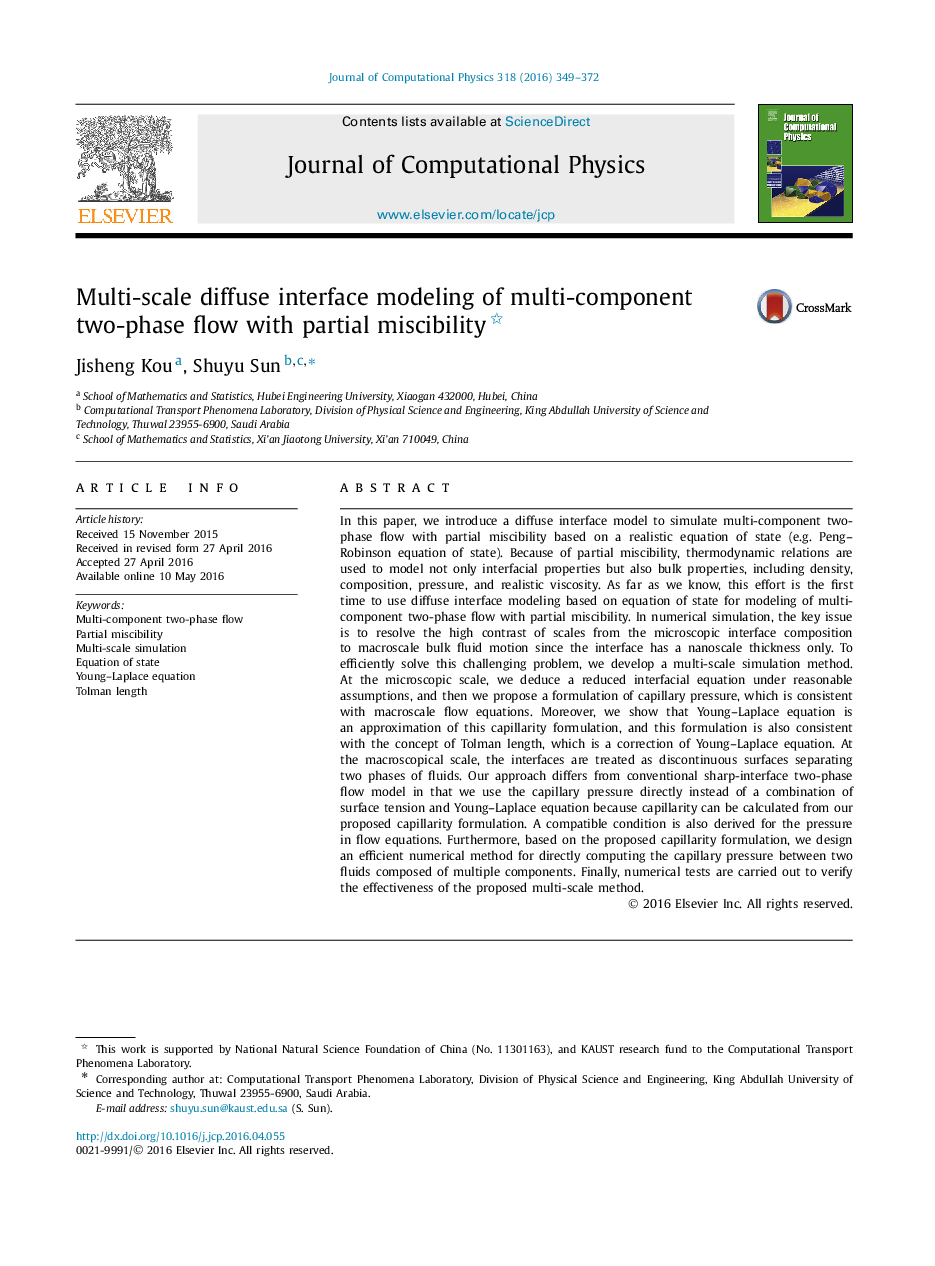| Article ID | Journal | Published Year | Pages | File Type |
|---|---|---|---|---|
| 518495 | Journal of Computational Physics | 2016 | 24 Pages |
In this paper, we introduce a diffuse interface model to simulate multi-component two-phase flow with partial miscibility based on a realistic equation of state (e.g. Peng–Robinson equation of state). Because of partial miscibility, thermodynamic relations are used to model not only interfacial properties but also bulk properties, including density, composition, pressure, and realistic viscosity. As far as we know, this effort is the first time to use diffuse interface modeling based on equation of state for modeling of multi-component two-phase flow with partial miscibility. In numerical simulation, the key issue is to resolve the high contrast of scales from the microscopic interface composition to macroscale bulk fluid motion since the interface has a nanoscale thickness only. To efficiently solve this challenging problem, we develop a multi-scale simulation method. At the microscopic scale, we deduce a reduced interfacial equation under reasonable assumptions, and then we propose a formulation of capillary pressure, which is consistent with macroscale flow equations. Moreover, we show that Young–Laplace equation is an approximation of this capillarity formulation, and this formulation is also consistent with the concept of Tolman length, which is a correction of Young–Laplace equation. At the macroscopical scale, the interfaces are treated as discontinuous surfaces separating two phases of fluids. Our approach differs from conventional sharp-interface two-phase flow model in that we use the capillary pressure directly instead of a combination of surface tension and Young–Laplace equation because capillarity can be calculated from our proposed capillarity formulation. A compatible condition is also derived for the pressure in flow equations. Furthermore, based on the proposed capillarity formulation, we design an efficient numerical method for directly computing the capillary pressure between two fluids composed of multiple components. Finally, numerical tests are carried out to verify the effectiveness of the proposed multi-scale method.
